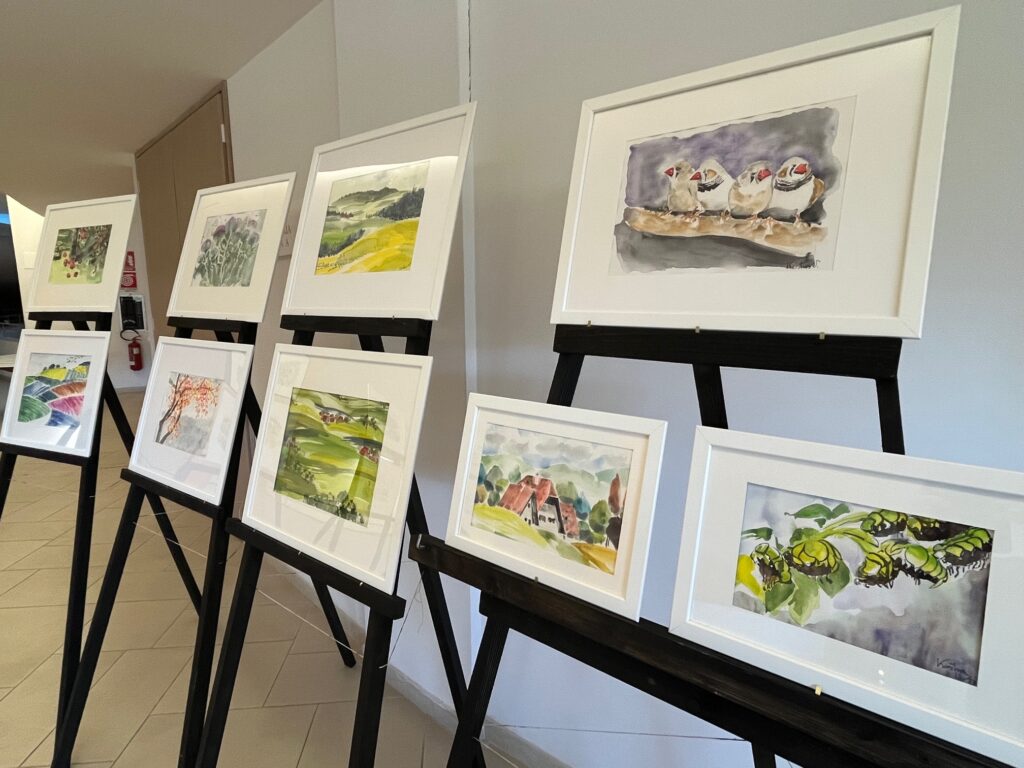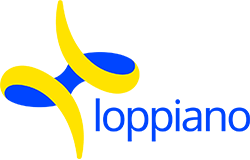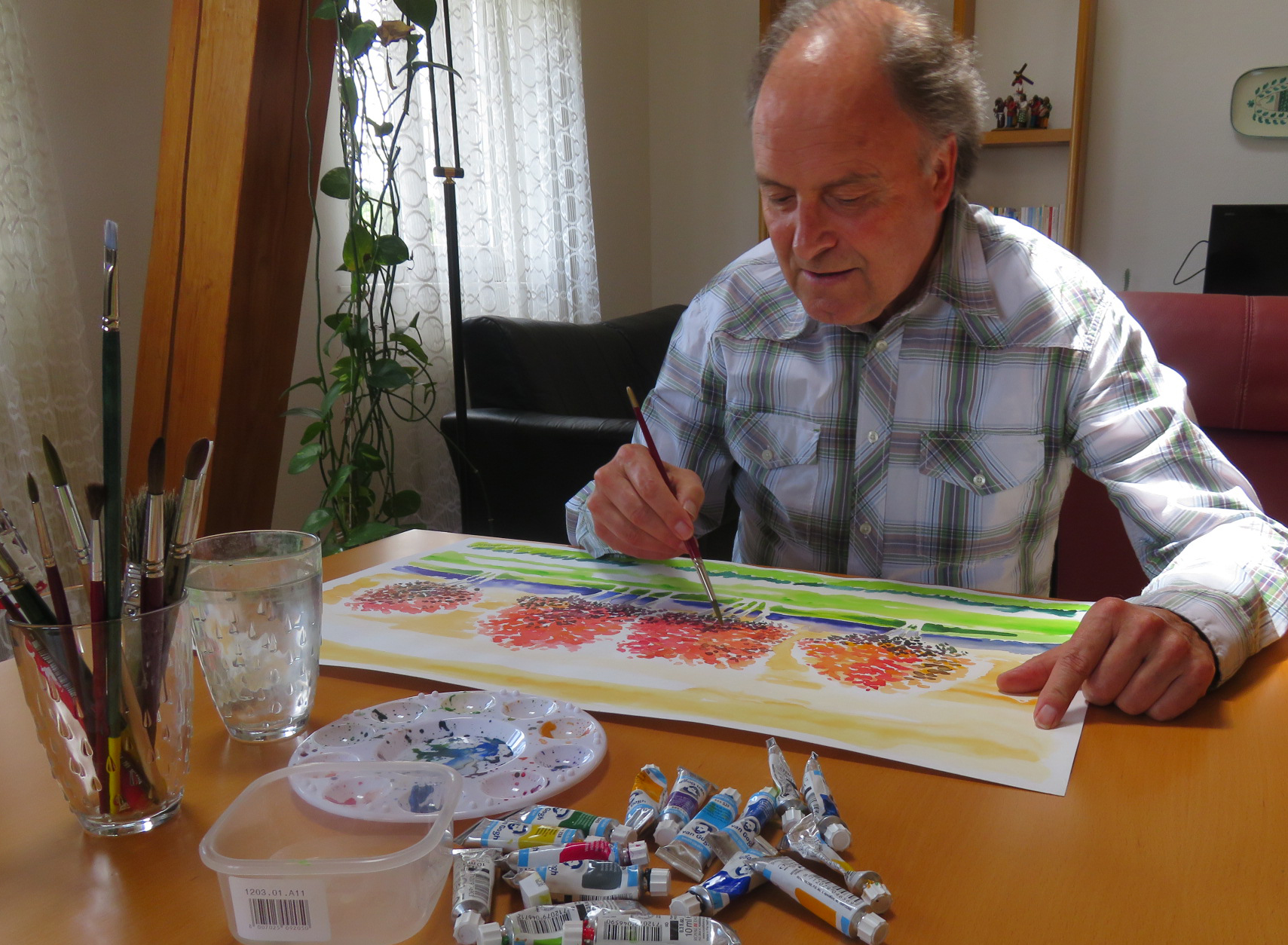22 watercolours by Walter Kostner, the creator of Gibì and DoppiaW, are on show at the Loppiano Auditorium: an opportunity to get to know the artist better who recently moved to the little town.
Typically, he artist plays it down. For him, these are ‘works that I neither sold nor gave away’. And he explains that the exhibition of his paintings is solely the merit of Gianni Antoniol, watercolourist and sculptor, who wanted it and set it up in view of the watercolour course to be held in Loppiano from 31 October to 3 November by Antoniol himself. Walter Kostner is grateful to him, but reiterates that ‘the exhibition is just something small, especially since it only includes twenty or so paintings. That may be true, but reading the impressions left by visitors, the effects are quite different: ‘They photograph reality, making it into poetry’, ‘A true gift for the eyes and soul’, ‘Life in its simplicity and beauty’ and again: ‘They are beautiful. They gladden the heart’.
There are 22 works on display in the upper gallery of the Auditorium. Some are from 2018 and 2019, two from 2024, the others from the period in between, and mostly depict landscapes and views of nature, but there are also flowers and birds. The solo exhibition officially ended on 3 November, but it continues, because the artist’s works have been joined by those of the participants in Antoniol’s course, which Kostner took part in at various times.

The exhibition dedicated to Kostner’s watercolours was certainly a minor addition to the course, but also, if you like, a small tribute to his move to Loppiano last July from the Swiss Focolare town of Montet. Walter Kostner is an illustrator of short stories, known as the creator of Gibì and DoppiaW, the protagonists of comic strips that are highly appreciated in many countries around the world for the beauty and originality of the adventures of the two likeable characters and the unsettling wisdom of their dialogues. His production is varied and rich, as can be seen at https://gibidoppiaw.pythonanywhere.com, which brings together the exploits of the two characters, with the short stories and with watercolours.
‘When I was 14, I tried painting with the watercolour technique, but I made a real mess of it and said to myself, ‘Never again’’. But you should never say that. ‘Seven years ago, my brother Georg, a painter, gave me a watercolour set and urged me: ‘Try it’’. A gentleman who frequented Montet was already enthusiastic about the first works, encouraging the apprentice. ‘Thus began a season of great production and sales,’ says Kostner, ’in which the idea also came out of holding short courses with a dozen or so inhabitants of the Swiss little town. In this way we experienced some really nice moments.
As a good Ladino, the tone of Kostner’s voice is calm, but something shines through about his passionate involvement with watercolours. ‘What I like is that it always gives you surprises, because water – which is the basic element –
you can’t control it. It plays games with you, it creates with you, but it also plays tricks on you’ ». He adds: ‘Watercolour is transparent. If you put one colour on, you can no longer cover it with another, because everything shines through. The most beautiful thing is that water plays with colours. And you are, at the same time, both creator and spectator’.

